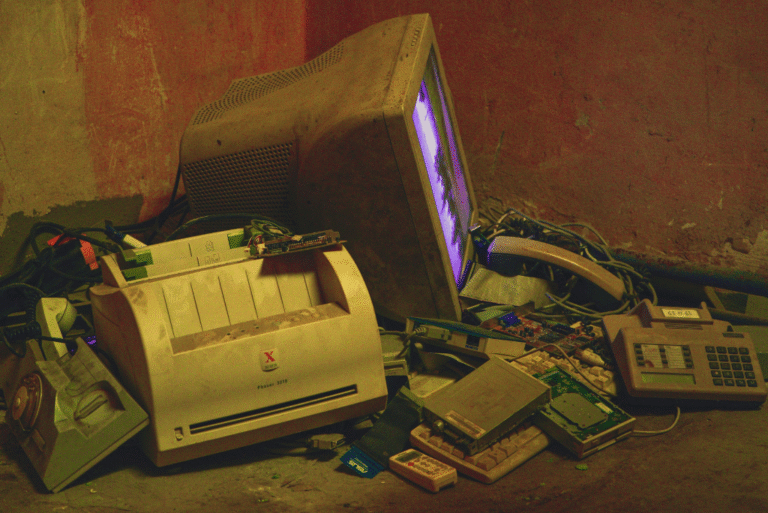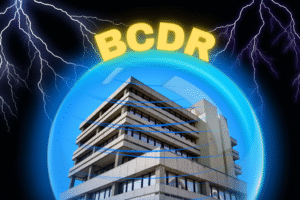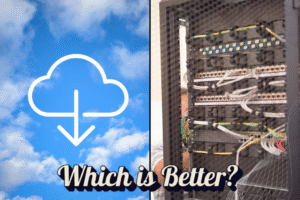When money is tight, many small business owners put off upgrading technology. After all, if the computer still turns on and the software “mostly” works, why spend more?
Truthfully, outdated technology costs far more than you realize. From lost productivity to serious security risks, sticking with old systems drains time, money, and energy — often more than a smart upgrade would.
1. Lost Productivity & Employee Frustration
Just because a computer eventually turns on doesn’t mean it will actually work for your business. Slow computers, clunky software, and frequent crashes waste hours of employee time, especially if they happen every week (or every day). Multiply that lost time across your team and you’re losing days — even weeks — of productivity each year.
Frustrated employees also disengage more quickly. When technology slows them down, employee morale drops, and turnover risk rises throughout your business. Keeping technology updated and working keeps stress off your employees and enables them to work without additional roadblocks.
2. Increased Downtime & Repair Expenses
“They don’t build them like they used to,” is a slogan people throw around when it comes to cars, houses, pots and pans, and plenty of other tools and machines. An old 1940s fridge can still function (and sometimes even outperform) today’s models, but unlike that old refrigerator, old tech does not perform new tech — and it shouldn’t!
Older systems break more often, and emergency repairs aren’t cheap when these systems go down. Even worse, downtime stops your business cold if your critical technology is out of date, including critical on-site servers or computers. Repairs to these systems can take hours or days, costing your business both in revenue and repairs. And that’s not even mentioning the potential lost and/or unrecoverable data.
3. Higher Cybersecurity Risks
Cybercriminals love outdated technology. Unsupported operating systems and legacy software lack critical security updates, which means that these systems don’t keep up with current cybersecurity practices and preventative measures. With old technology in use, your business is an easy target.
If your business does suffer a cyberattack, your business may lose sensitive data such as business secrets, customer data, financial details, and more. On top of the information and money lost in a breach, your business will undoubtedly lose customer trust and face potential legal penalties. According to studies, over 60% of small businesses close within 6 months of a major cyberattack. That’s a cost no business can afford.
4. Missed Opportunities for Growth
Outdated systems don’t often integrate well (or at all) with modern tools and software. For example, systems operating on Windows 10 will need to be upgraded to Windows 11 or replaced entirely if they cannot upgrade because Microsoft support and updates for Windows 10 ends and reaches “End of Life” status in October 2025. By not upgrading the systems and relying on the old, your business misses out on key features and integrations including:
- Cloud collaboration that improves efficiency.
- Automation that reduces repetitive work.
- Data insights that drive better decisions.
Competitors using modern IT are running faster, smarter, and leaner while you’re stuck fighting with old systems.
5. The Real Cost of “Saving Money”
Delaying upgrades may feel like saving money, but it’s often the opposite. The combined costs of downtime, lost productivity, security risks, and missed growth opportunities far outweigh the investment in modern, reliable technology.
Think of it like this: you wouldn’t keep an unreliable delivery van that breaks down every month. Why treat your business technology any differently?
Don’t Let Old Tech Hold You Back
Outdated technology doesn’t just inconvenience your team — it silently eats into profits, productivity, and peace of mind.
A proactive IT strategy can help you:
- Budget for upgrades without surprises.
- Stay secure with up-to-date systems.
- Empower your team with tools that make work easier, not harder.
At Marvel IT Services, we help small businesses identify where outdated tech is costing them — and build a smarter, more cost-effective IT roadmap for the future.
👉 Ready to stop wasting money on old tech? Let’s talk about your IT strategy.




